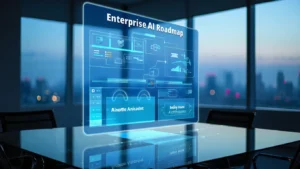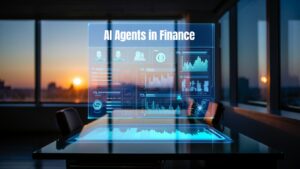Logistics and transportation are critical to the global supply chain. With rising consumer demands and increasing shipping complexities, businesses require innovative solutions to streamline operations and reduce costs. AI-powered solutions in logistics and transportation offer transformative capabilities, providing real-time insights and predictive tools to address challenges proactively.
1. The Role of AI in Logistics
AI (Artificial Intelligence) leverages advanced algorithms and systems to analyze extensive datasets, including customer orders, traffic patterns, and weather conditions. This enables data-driven decision-making, allowing businesses to optimize routes, forecast demand, and improve delivery speed while reducing costs.
2. Predictive Demand Forecasting
- Key Insight: Aligning supply with customer needs is essential.
- AI’s Contribution: Machine learning analyzes historical sales, seasonal patterns, and market trends to predict demand fluctuations.
- Impact: Reduced waste, minimized stockouts, and better resource allocation.
AI-driven predictive analytics also helps fleet managers plan efficient schedules, ensuring vehicles operate at full capacity, reducing idle time, and optimizing delivery windows.
3. Route Optimization
- Key Insight: Traffic and weather disruptions lead to delays.
- AI’s Contribution: Real-time updates guide drivers through the most efficient routes.
- Impact: Faster travel times, reduced fuel costs, and enhanced safety.
Advanced tools simulate multiple route scenarios, accounting for traffic density, weather, and delivery windows, enabling precise planning.
4. Predictive Maintenance
- Key Insight: Unscheduled breakdowns disrupt operations and increase costs.
- AI’s Contribution: Sensors track vehicle performance, and algorithms identify anomalies signaling potential failures.
- Impact: Timely repairs minimize downtime, improve reliability, and reduce maintenance costs.
This data-driven approach refines inventory management for spare parts, avoiding over-servicing and ensuring cost-effectiveness.
5. Real-World Applications
- Autonomous Vehicles: Testing self-driving trucks to enhance schedules and reduce driver fatigue.
- Smart Warehousing: AI-driven picking systems reduce errors and accelerate order fulfillment.
- Dynamic Pricing: Adjusts rates in real-time based on demand, costs, and competitor activity.
These use cases showcase how AI enhances efficiency and provides actionable insights to elevate supply chain operations.
6. Steps to Implement AI in Logistics
- Define Goals: Identify specific challenges such as late deliveries or high costs.
- Prepare Data: Consolidate data sources, including sales, fleet, and warehouse metrics, for analysis.
- Pilot Projects: Start small with targeted functions like scheduling or demand forecasting.
- Monitor Results: Use analytics to track KPIs such as cost savings and delivery times.
7. Addressing AI Challenges in Logistics
| Challenges | Solutions |
|---|---|
| Data Quality & Integration | Implement robust data management practices and integration tools. |
| Organizational Change | Use training, communication, and support to foster AI adoption. |
| Skills Gap | Train existing staff and recruit AI and logistics experts. |
| Cost & ROI Concerns | Start with small pilots to demonstrate ROI and build confidence for scaling. |
| Ethical & Legal Considerations | Ensure compliance with regulations and adopt transparent AI practices. |
Case Study: AI-Powered Optimization in Logistics
Cargill’s Innovations:
Cargill integrates AI to optimize poultry production and transportation. Key initiatives include:
- Microbiome Analysis: AI-driven insights on poultry gut health enable better feed management, boosting performance and sustainability.
- Birdoo: A predictive imaging tool that uses AI for real-time weight measurement, helping producers optimize operations and reduce costs.
These solutions exemplify how AI drives efficiency and promotes sustainability in complex supply chains.
FAQs on AI in Logistics
Q: What are the key benefits of AI in logistics?
A: Cost reduction, enhanced efficiency, reliable operations, and sustainability.
Q: How does AI optimize routes?
A: By analyzing traffic, weather, and road conditions, AI identifies the fastest and most efficient paths.
Q: What are common challenges in implementing AI?
A: Data integration, skill gaps, and ROI concerns are common hurdles.
Q: How can companies address the skills gap?
A: By training existing staff and hiring AI and logistics experts.
Q: Why is choosing the right AI consultancy crucial?
A: Expert consultants ensure seamless implementation and alignment with business goals.
Ready to Transform Your Logistics Operations?
AI is revolutionizing logistics and transportation, from predictive forecasting to real-time routing and maintenance. With defined goals, reliable data, and the right AI consultancy, businesses can achieve new levels of efficiency and competitiveness.
Get started with RTS Labs today and unlock AI’s potential in logistics!






